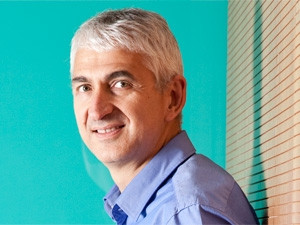
Dr Jonathan Broomberg, CEO of Discovery Health, has probably given this demo a hundred times before. But you wouldn't know it. The second version of the health insurer's smartphone app for its members is a few weeks away from launch. And he seems as excited by many of the app's features as he likely was when the developers showed him the beta version.
It's one of a suite of seven apps the insurer has developed, primarily for iOS devices (with some, like the smartphone app, available for Android devices too).
The Discovery member app used to simply be a way to retrieve and request a limited set of information across its products. But, from October 2012, its medical scheme members have been able to view their health records, submit and track claims, link up their Vitality programme, and even order door-to-door medicine delivery.
Its doctor-specific app, HealthID, completes the picture. But this isn't one of those initiatives that only took shape a year ago.
"It's a story that goes back for quite a long time, probably even over a decade," says Broomberg. He explains how the group has invested in developing the intellectual property and software that allows the business to 'interpret the billions of lines of claims data that pours in here every year'.
Analytic tools
At Discovery, big data is real. It uses 'grouper tools' to assemble data into 'usable chunks and interpret it'. The insurer has had this capability for years and uses it for internal analysis.
"When we saw how mobile was exploding, we realised that what we had and used internally could also make a big impact externally," says Broomberg. This was around three years ago.
"We saw the convergence of technology. One of the reasons no one else is able to do this in South Africa - and actually not many in the world do - is that people haven't made those investments in the deeper analytics tools.
"A lot of people can write an app," says Broomberg. "But it's all about the data."
The suite of apps, especially its HealthID doctor app and member app, were 'very easy' sells internally.
"One big strategic objective - broadly - is to improve the healthcare system for the stakeholders we look after - for our members, but also for professionals," says Broomberg. In practical terms, this means giving healthcare providers access to relevant information, and helping them engage with the group administratively in an easier way. There's a noticeable advantage in that the apps reduce costs - and therefore premiums - by 'trying to squeeze inefficiency out of the system'. Broomberg says the apps "simplify some of the admin, in a way that mobile is so brilliant at.
"For patients, it was [about] improving the quality of their healthcare by giving their doctors information," he adds. "This brings clinical information to doctors in a way they've never had it before."
There's a very strong business objective too, says Broomberg. "We wanted to do something that dramatically enhances our competitive advantage. You now want to be with Discovery Health because then you have your HealthID. If you leave, you lose your 'identity'."
Critical mass
He says the insurer is experiencing the 'classic adoption curve', and feedback from doctors and members is said to be very positive.
"We've got the early adopters, but now we need to mainstream it," says Broomberg. Its addressable universe for HealthID is 13 000 doctors. Reaching 5 000 of them would cover a large proportion of its membership base.
Broomberg has his sights on 2 000 active users - regular users are currently around half of that.
"Discovery has 30 people on the road every day... account managers who talk to our doctors, helping them, training them," says Broomberg.
On the face of it, the numbers for members seem far better. The app has been downloaded more than 100 000 times and around 150 000 members have given consent. But Discovery Health covers over 2.5 million lives, with nearly 1.3 million principal members. "We have to push that very, very hard."
The company is aiming to ship a new release of the apps every three to four months. A lot of the 'tricky' integration work (like getting real-time pathology results from the big labs in the country) has been done. It's looking to both improve existing functionality and add whole new blocks of functionality.
The group has shown the apps to government, which is said to be excited by them. Broomberg says the state is particularly interested in what parts of the apps "could be used to create a similar sort of platform for the national health system.
"It's very different, though," he adds. "They don't get the claims information that's an automatic source of all this data."
Elsewhere in the world, there aren't too many similar apps. Broomberg lists the Scandinavian countries, which each have a full national healthcare system. He also points to Israel, which is "quite advanced with this kind of stuff.
"But we haven't seen much by way of private health insurers doing this in the way we have." Not even in the UK and the US.
The apps reduce costs - and therefore premiums - by trying to squeeze inefficiency out of the system.
However, there are big - almost invisible - shifts happening in the healthcare industry. Medical records in the US have gone from 15% electronic to 'probably over 80%' in two years, says Broomberg. The reason? The Obama administration has put in place an incentive for practices to convert to electronic medical records.
"In South Africa, I would guess that 90% of medical practices are still using physical paper in a manila folder."
That's a lot of potential growth.
First published in the June 2013 issue of ITWeb Brainstorm magazine.
Share